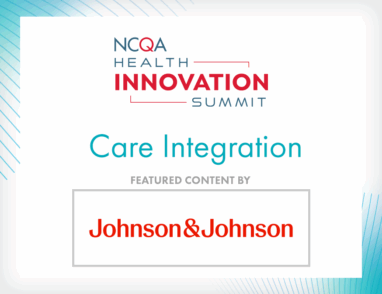Riding Two Horses at Once: Governing Data Quality in Both Claims and Clinical Data
October 28, 2025 · Guest Contributor
Riding two horses at the same time (“double riding”) is an advanced skill in the equestrian world. But while it looks like all the skill and balance lie in the rider’s abilities, attempting this feat without well-trained horses could result in disaster.
We could look at claims and clinical data like two “horses”: Well-prepared and accustomed to high performance standards—or potentially dangerous. Sometimes they can be a mix of the two as claims data might be better behaved than clinical data, and clinical data might be friskier and less predictable.
Success as a double rider depends on trusting two horses that have different qualities and personalities. The same applies when dealing with claims and clinical data. Trust is necessary—the trust that comes from having well-trained resources.
Data Quality Versus Data Governance
Attendees at the 2025 NCQA Health Innovation Summit know that data governance is a top priority in the health care quality community, even if it remains in the shadow of its more attractive relative, data quality. IBM defines data quality this way:
“Data quality measures how well a dataset meets criteria for accuracy, completeness, validity, consistency, uniqueness, timeliness and fitness for purpose, and it is critical to all data governance initiatives within an organization.”
Data quality is essential to accurate and meaningful insights that can support decision making throughout health care. How is it related to data governance—AKA: the people, processes and technology involved in improving data quality? The American Health Information Management Association published this definition of data governance:
“The overall administration, through clearly defined procedures and plans, that assures the availability, integrity, security and usability of the structured and unstructured data available to an organization.” (AHIMA, 2020)
In other words, if you’re interested in improving data quality, you’re already doing some amount of data governance. Data quality should be an outcome of effective data governance.
Changing Our Attitude About Data Governance
NCQA Summit presenters encouraged us to think about quality as an “attitude”: a lived, highly observable part of an organization’s culture. If quality isn’t anchored in that culture, data quality efforts can fragment or fizzle out.
If we are to support AI, data from the Internet of Things, and the productization of Big Data, we will need good data achieved through governance. The problem is that data governance has a reputation for being a slow, painful, complicated, unfunded slog that is difficult to quantify and must be fully finished before data can be trusted or used.
It’s time we change that, and payers are in a key position to help. What is a health plan’s role in governing upstream data? Simply stated, it is to help make data governance palatable. If we think about data governance as an attitude, rather than an overwhelming undertaking, we can achieve long-term effectiveness at improving data quality. And we know that data quality is essential to everything we hope to accomplish with data.
Payers can provide incentives, visible leadership and inspiration to encourage upstream data sources to develop a culture of data governance in their organizations and move toward sustainable data quality improvement at the source—to implement data governance in, across and between contributors to the data supply chain.
Tips for Advancing Data Governance
As new ways of using data multiply and accelerate, we all expect exciting and awe-inspiring feats of technology. To make great things happen, we must be able to trust data—data that has been governed. To that end, we suggest:
- Avoid the trap of thinking that data governance must be done perfectly across an organization before data can be used. Start by promoting the right attitudes, which sounds far less intimidating and much more actionable, and watch the action follow.
- Take credit for smaller-scale improvement as “data governance in action” for both payers and providers. Let’s turn the old idea of data governance as being “some kind of punishment” into a series of small wins to celebrate.
- Lead the way. HIEs and provider organizations need data targets. Payers can help by defining what data must be “fit for use” at the source and providing assistance and incentives to support strong data governance at the source. Payers can provide much-needed data governance leadership.
As we prepare for what promises to be an exciting year of AI and innovation, remember that all the shiny features we hope to see will stand on well-governed data that is the result of a combination of claims and clinical data. These are our primary horses—our sources!—to rely on. How will you inspire the provider community to train and govern that data for everyone to stand on?
This blog is brought to you by J2 Interactive and the views expressed are solely those of the sponsor.







